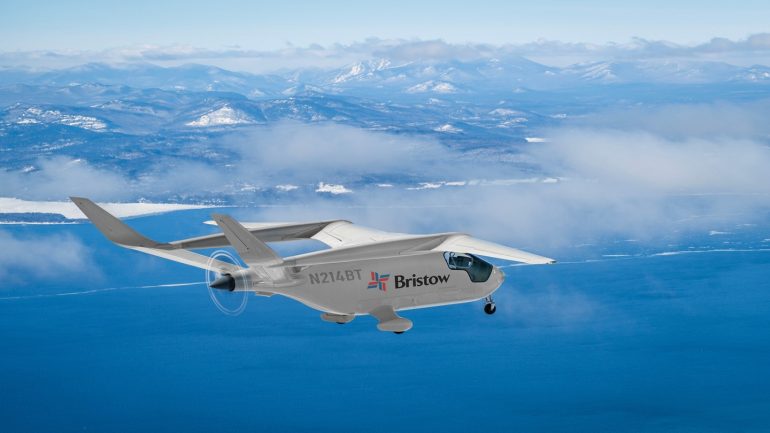 Log in
Log in

In a groundbreaking move towards sustainable aviation, Norway has launched an ambitious initiative to become a zero-emission aviation test country, with its first demonstration electric flights scheduled to commence between Stavanger and Bergen by late summer 2025. This innovative project positions Norway as a global leader in the transition towards environmentally friendly air travel, highlighting the country’s commitment to climate goals, technological advancement, and aviation sustainability.
Here’s a table summarizing the most up-to-date annual data on flights to and from Norway’s airports (via Avinor), including both passenger counts and flight movements. Data covers from 2023 through mid‑2025:
| Year | Total Passengers (to/from Norw. airports) | Commercial Flight Movements | International Passengers (%) | Domestic Passengers (%) | Comments |
|---|---|---|---|---|---|
| 2023 | ≈ 49.0 million | 624,421 ~ (+1% YoY) | ↑ ≈ 17% vs 2022, ~under 2019 level | ↑ ≈ 5% vs 2022, still below 2019 | +10% vs 2022, ca. –10% of 2019 benchmark (Euronext Live, Mynewsdesk) |
| 2024 | ≈ 51.4 million | ~618,000 (–1% vs 2023) | ↑ ~9% YoY; ~43% of total traffic | ↑ ~1.9% YoY | ~95% of 2019 passenger volume (TradingView, Travel And Tour World) |
| Jan–May 2025 | May only: 4,764,308 (May 2025) | May: 20,426 domestic + 17,114 international = 37,540 flights | International passengers: 2,019,803 (–1.4% vs May 2024) | Domestic passengers: 1,372,079 (–0.1% vs May 2024) | Latest partial-year data: overall slight decline YoY (SSB) |
The initiative is part of Norway’s National Aviation Strategy and the National Transport Plan (2025–2036), which aims to drastically cut carbon emissions from the aviation sector. As part of this commitment, the government has allocated 1 billion Norwegian kroner (approximately USD 93 million) to fund the transition towards zero- and low-emission aviation.
Jon-Ivar Nygard, Norway’s Transport Minister, emphasized the importance of this investment during the official signing of the agreement at Bergen Airport Flesland, stating:
The partnership behind the project includes Avinor, the state-owned operator of most civil airports in Norway, and Norway’s Civil Aviation Authority, who are leading the national strategy to position the country as a zero-emission testbed. The program is backed by international collaborators, including BETA Technologies, a U.S.-based electric aircraft manufacturer, and Bristow Norway, a subsidiary of the global aviation services company Bristow Group.
Together, these stakeholders are setting the stage for a “regulatory sandbox” — a controlled environment where new technologies can be tested under real-world conditions. The project brings together airlines, aircraft manufacturers, energy companies, airport operators, and regulatory bodies, all aiming to develop a fully integrated green aviation ecosystem.
Central to this initiative is BETA Technologies’ ALIA CX300, an electric conventional takeoff and landing (eCTOL) aircraft. This aircraft, recently manufactured in Burlington, Vermont, is the second production-intent vehicle built by BETA and has received FAA certification for multiple flying conditions.
The demonstration flights will begin in Q3 of 2025, initially focused on cargo operations between Stavanger Airport and Bergen Airport. The Stavanger site is expected to have its charging station operational by 1 June 2025, while Bergen will receive a mobile electric charger by 15 August.
These early flights mark a significant step in validating electric aviation technology under real operational circumstances, not only testing the aircraft but also the charging infrastructure, air traffic coordination, and ground handling logistics.
Norway is particularly well-suited for pioneering green aviation. The country has already made global headlines by leading the world in electric vehicle (EV) adoption — more than 80% of new car sales in Norway are electric. This expertise in electrification and renewable energy is now being extended into aviation.
Key reasons why Norway is ideal for zero-emission aviation testing include:
Geography: With many short domestic flight routes over fjords and mountains, the country presents ideal conditions for testing electric aircraft with shorter range.
Existing Clean Energy Grid: Norway’s electricity generation is almost 100% renewable, mainly through hydropower.
Political Will: Strong government support through policy and funding enables rapid innovation and deployment.
Advanced Air Navigation: Norway has invested in remote tower technology and air traffic modernization, including a recent upgrade contract with Indra Sistemas, enabling more efficient coordination of airspace for new types of aircraft.
If successful, Norway’s initiative could become a model for other countries looking to decarbonize their aviation sectors. The integration of zero-emission aircraft into commercial operations represents one of the most complex challenges in transportation — requiring coordination across technology, regulation, infrastructure, and market adoption.
Dave Stepanek, Bristow Group’s Chief Transformation Officer, highlighted the long-term vision of the program:
“This project exemplifies our philosophy of crawl, walk, run for early adoption of new aviation technologies. It solidifies the commitment to our vision to be a leader in innovative and sustainable aviation.”
Beyond cargo, future phases may include passenger services, medical flights, and regional air mobility, gradually expanding the use of zero-emission aircraft throughout Norway and eventually beyond.
While the initiative is promising, there are several key challenges that will need to be addressed for successful scaling:
Battery Technology: Electric aircraft are currently limited in range and payload due to battery energy density constraints.
Charging Infrastructure: Airports across the country will require investment in high-capacity, fast-charging stations.
Certification and Regulation: Global aviation authorities will need to align safety regulations for new electric propulsion systems.
Public Acceptance: Building trust in new technology among passengers and operators will be essential.
Climate Impact of Battery Production: Ensuring that the materials and production methods for batteries are sustainable and ethically sourced.
Norway’s regulatory sandbox approach offers a way to address these challenges in a controlled and transparent environment, serving as a global testing ground for both innovation and risk management.
Looking beyond 2025, Norway aims to gradually replace short-haul fossil-fuel flights with electric or hybrid alternatives. The government and aviation stakeholders are exploring:
Hydrogen-powered aircraft as an alternative for longer domestic routes.
Integration with public transport, including ferries and electric buses, for end-to-end green mobility.
Green fuel subsidies and incentives for sustainable aviation fuel (SAF) where electric is not yet viable.
By 2040, Norway envisions an aviation sector where all domestic flights are powered by zero-emission aircraft. This goal aligns with broader European Union climate targets and could spur a continental transition to clean air travel.
With this bold step, Norway is redefining what sustainable aviation can look like in practice. Through a carefully designed, collaborative ecosystem involving government, industry, and technology pioneers, the country is setting new standards for low-emission transportation.
This green aviation initiative will not only benefit the environment but also open up new economic opportunities in green tech, job creation, and international leadership in climate innovation.
As test flights begin between Stavanger and Bergen, the world will be watching closely. If successful, this project could mark the dawn of a zero-emission aviation era, with Norway leading the way.



